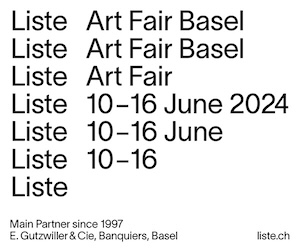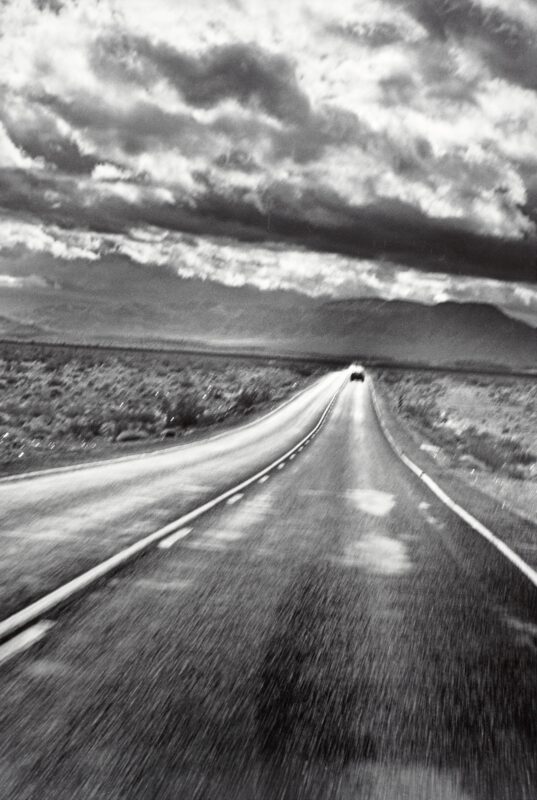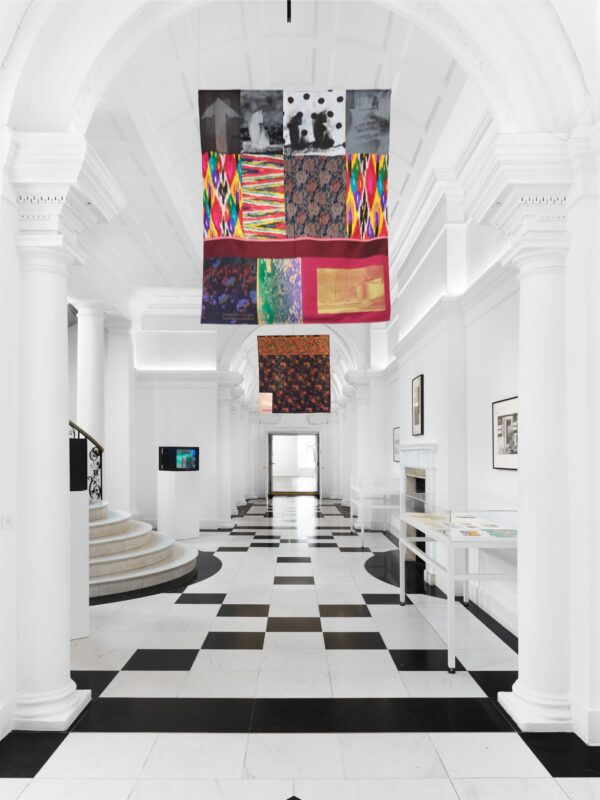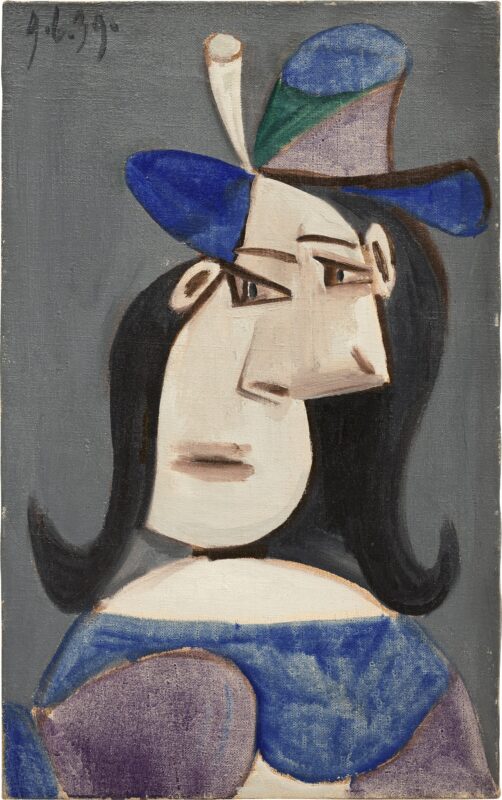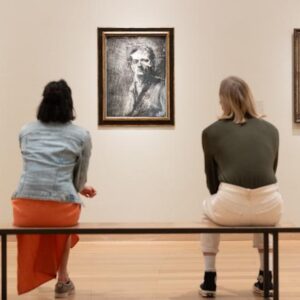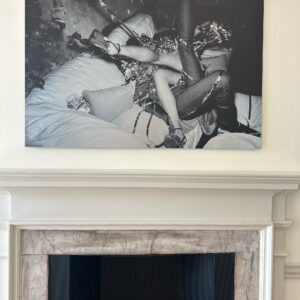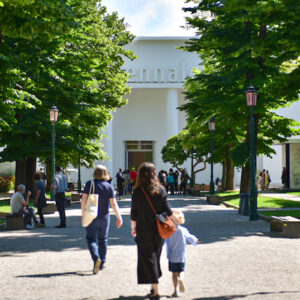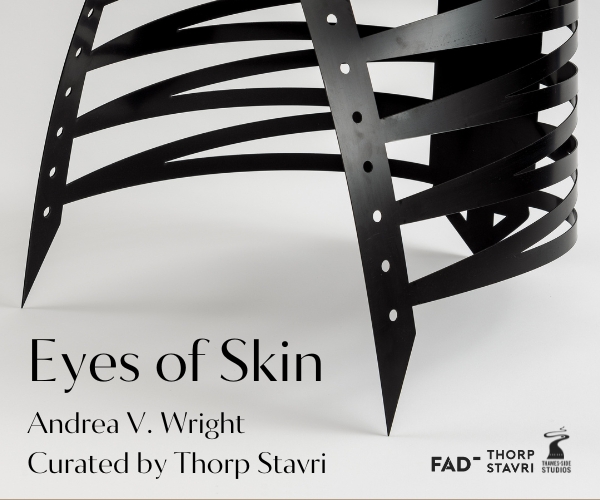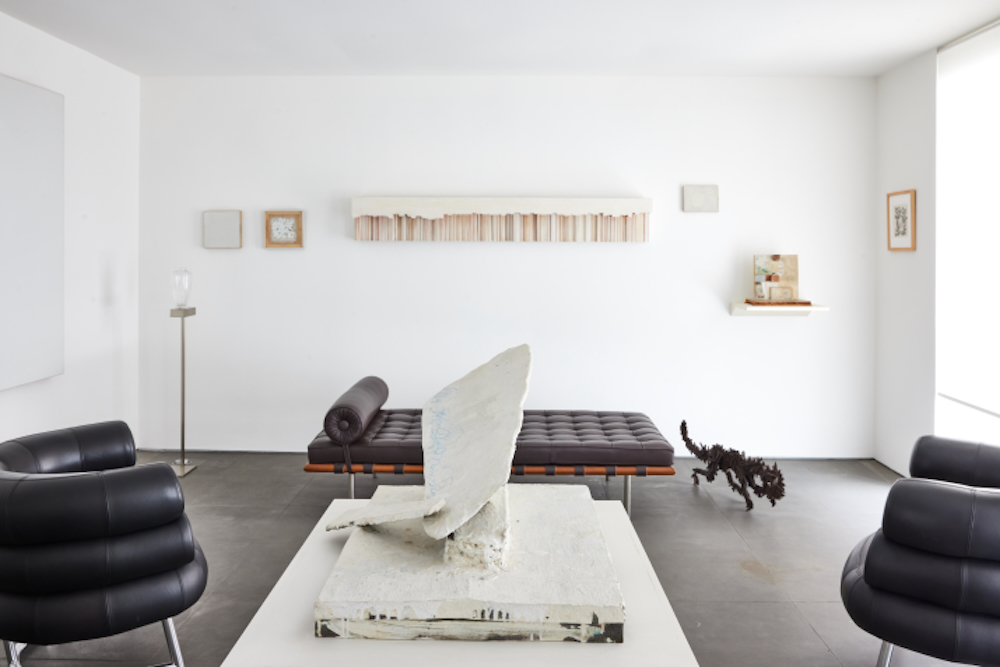
This Summer in London, Sotheby’s will offer some 80 works from Ralph Goldenberg’s collection which together evoke both the breadth of his interest – from Abstract Expressionism, to ‘minimalism’ from both sides of the Atlantic, to the YBAs, Pop Art and beyond – and his unique aesthetic.

The home in which much of the collection hung – Hay’s Mews in Mayfair – embodied in its purest expression the minimalist aesthetic that spoke so strongly to Ralph: polished stone floors, crisp white walls, cubic rooms, natural light and high ceilings. Above all else, Ralph was captivated by the dialogue between the works and the space they inhabited, creating along the way, a home which rivalled that of a Modernist museum. Beyond its striking minimalist spaces, the house had – like a great work of art – great provenance, having been originally designed in 1987 for Doris Saatchi. It was, and had always been, a house made to showcase great art.
Paying homage to the perfect marriage of art and architecture that existed in Hay’s Mews, the Goldenberg collection will be displayed this summer in a specially designed space in Sotheby’s New Bond Street galleries, carefully curated to mirror the serene look and spirit of Hay’s Mews. The exhibition will be free and open to the public from 19th-24th June, after which the collection will be offered in designated sequences in Sotheby’s Modern and Contemporary Evening and Day Sales in London on 25th and 26th June.
Born in Chicago, Ralph was enthralled by art from the start. As a young man, he would wander through the Art Institute of Chicago, soaking it all in, and by the Sixties, he was exploring the Chicago art scene, reading widely, and learning along the way from local galleries.
He had a natural hunger to learn and a roving curiosity, following his interests wherever they led: reading widely, from Franz Kafka, Philip Roth and Joseph Heller to Joan Didion and Italo Calvino to books about artists, art movements, and history. He kept up with current affairs, loved the Opera and popular music – from the Beatles to Bruce Springsteen – and liked to surround himself with beauty, whether it was the clothes he wore, the furniture he bought, or the glassware and design in his homes.
As soon as finances would allow, Ralph channelled his artistic soul into the art of collecting. Prints were his first acquisitions, by artists such as Jean Cocteau, Norton Azumo, Carol Summers and Serge Poliakoff, and within the decade, he was acquiring oil paintings too, by Jean Dubuffet, Michael Goldberg, Joan Mitchell, Alexander Calder and Piet Mondrian.
Before long, his interests shifted to the Abstract Expressionists, gravitating towards works by Mark Rothko, Jackson Pollock, Willem de Kooning and Franze Kline. His curiosity did not stop there, as he became increasingly interested in the pared back aesthetic and contemplative nature of American and 1960s European minimalism: from Robert Ryman to Cy Twombly, Agnes Martin to to Lucio Fontana, and Brice Marden to Piero Manzoni, to name a few. Ralph was one of the few collectors of his time that looked at Minimalism through an international lens like this.
He would later display these works alongside those of the YBAS of the 1990s, such as Damien Hirst, Tracey Emin and Rachel Whiteread, thoughtfully selecting pieces, which still adhered to the collection’s overarching minimalist aesthetic. He acquired, for example, a rare white-on-white ‘Spot’ painting by Hirst, as opposed to a colourful version, and a number of classic concrete installations by Whiteread, including In Out IV which he loaned to Tate Britain’s major artist survey in 2017-18
Highlights from the collection:

Robert Ryman, Unfinished Painting, 1965
Created in 1965, Unfinished Painting sits amongst the most important works of Ryman’s celebrated oeuvre, widely cited as instrumental in the development of his singular approach to painting. There are few works of comparable scale and importance from this period, and of those, the majority reside in prominent international collections like the Dia Art Foundation, New York and the Collection Lambert in Avignon, France. Testament to its importance, this painting was chosen for the most revered Ryman exhibitions of the last century, including the Guggenheim, New York, and the Stedelijk Museum, Amsterdam. Unfinished Painting has remained in the Goldenberg collection since 1988 alongside two further works by Ryman (Untitled, 1963, est. £800,000-1.2m; Untitled, 1965, est. £700,000-900,000). He chose all three with the utmost precision and clarity, with each painting telling the story of Ryman in his highest form, and representing a moment of profound experimental creativity in his career. Goldenberg held a deep admiration for Ryman’s practice and was particularly fond of his Untitled from 1963, choosing the work specifically because it had been kept in its original artist’s frame.
Ryman is currently the subject of a solo exhibition at the Musée d’Orsay – his first large-scale presentation in a French public institution since 1981.
I am very fond of small works. They’re just wonderful to have around. They’re joyous in a very special way. Small statements are different. So are drawings. They don’t approach you; you must approach them. There’s something private between you and the work, a sense of engagement.
Ralph I. Goldenberg [As Cited in Art & Auction, May 1988]

Agnes Martin, Untitled, 2001
Completed during the very last years of her life and executed on an intimate scale, Untitled is a balanced symphony composed of the essential themes that characterise Agnes Martin’s imitable technique, and a sublime example of her mature body of work. In response to the fevered action painting of the Abstract Expressionists, with whom she is often compared, Martin embraced a more meditative approach, which led to her adoption of the square and the grid. Executed in acrylic and graphite, Martin’s soft pencil marks are a significant element of her work. When viewed from a distance, the repeated horizontal lines appear straight, the subtleness of the mark virtually disappearing into the surface of the canvas. Upon closer inspection, however, each ruling is entirely unique, characterised by slight irregularities where Martin picked up her pencil, paused, and then resumed, or where the textured surface of the paint discreetly diverts the path of her hand.
It was Martin’s relocation from New York to New Mexico in the early 1970s, which profoundly impacted her later works. The desert’s sparsity and ever-expanding nature inspired her minimalist compositions, consisting of precisely spaced bands and repeated alternating colours, which are perhaps an echo of the ever-expanding desert before her. Deeply influenced by Taoism and Zen Buddhism, Martin turned to geometry as a vehicle to portray classic perfection in its highest form, which she considered absent from
nature and only held in the mind.

Brice Marden, Hydra, 1987
A trip to the Saronic Greek island of Hydra in the early 1970s first inspired Brice Marden’s series of works with a name eponymous to the island. Dynamic and energetic in line, with a thick application of white gouache, Hydra is a reflection of Marden’s experience of a specific place:
You are observing nature and yet you are just trying to respond to it. You are not trying to draw a picture of it… It deals with a certain kind of abstraction. You can accept that as energy coming through and going back out into painting
Brice Marden quoted in Jeremy Lewison, Brice Marden: Prints, 1961-1991: A Catalogue Raisonné, London, 1992, p. 48
Marden was an artist who continuously refined and extended the traditions of lyrical abstraction. He experimented with self-imposed rules, limits and processes, drew inspiration from his travels, and in a similar way to Goldenberg’s approach to collecting, focussed on bringing together the diagrammatic formulations of Minimalism and the immediacy of Abstract Expressionism.
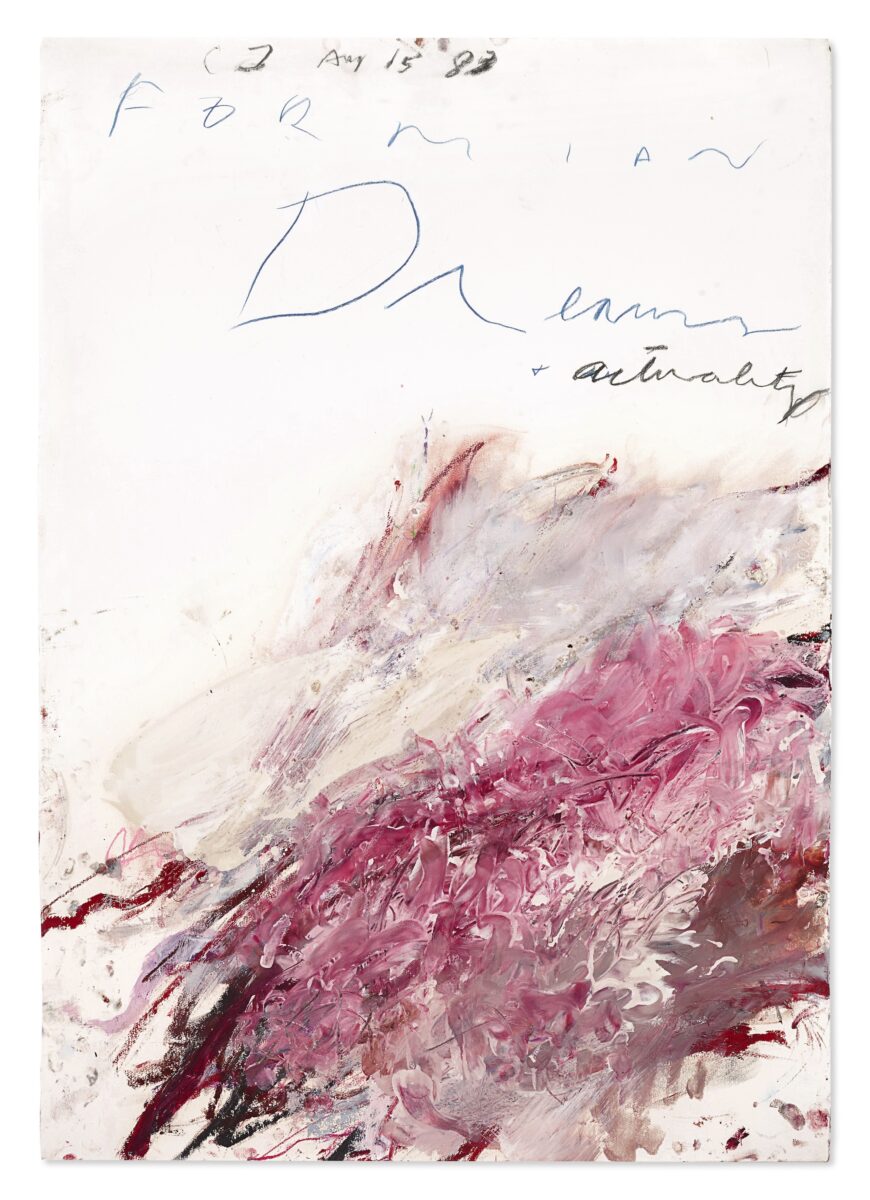
Cy Twombly, Untitled (Formian Dreams + Actuality), 1983
Leading the offering by Cy Twombly is Formian Dreams + Actuality, a rare example of his works on paper. In its signature juxtaposition of haphazard handwriting, bold gestural ferocity, and expressive painterly language, this work articulates the full force of Twombly’s extraordinary abstract lexicon – but on a more intimate scale and medium. The materials used, oil, wax crayon and oilstick, devoid of any figurative references, evoke pure essence and organic materiality. Goldenberg acquired the work at Sotheby’s New York in November 1989, and it has been in his collection ever since.
In addition, the collection comprises Twombly’s By the Ionian Sea, Naples from 1988 (est. £600,000- 800,000), a painted bronze that reflects his lifelong fascination with ancient texts and Greek and Roman antiquities. Other sculptures from this edition of six are held in The Broad, Los Angeles, the Museum of Modern Art, New York and within the Cy Twombly Foundation.
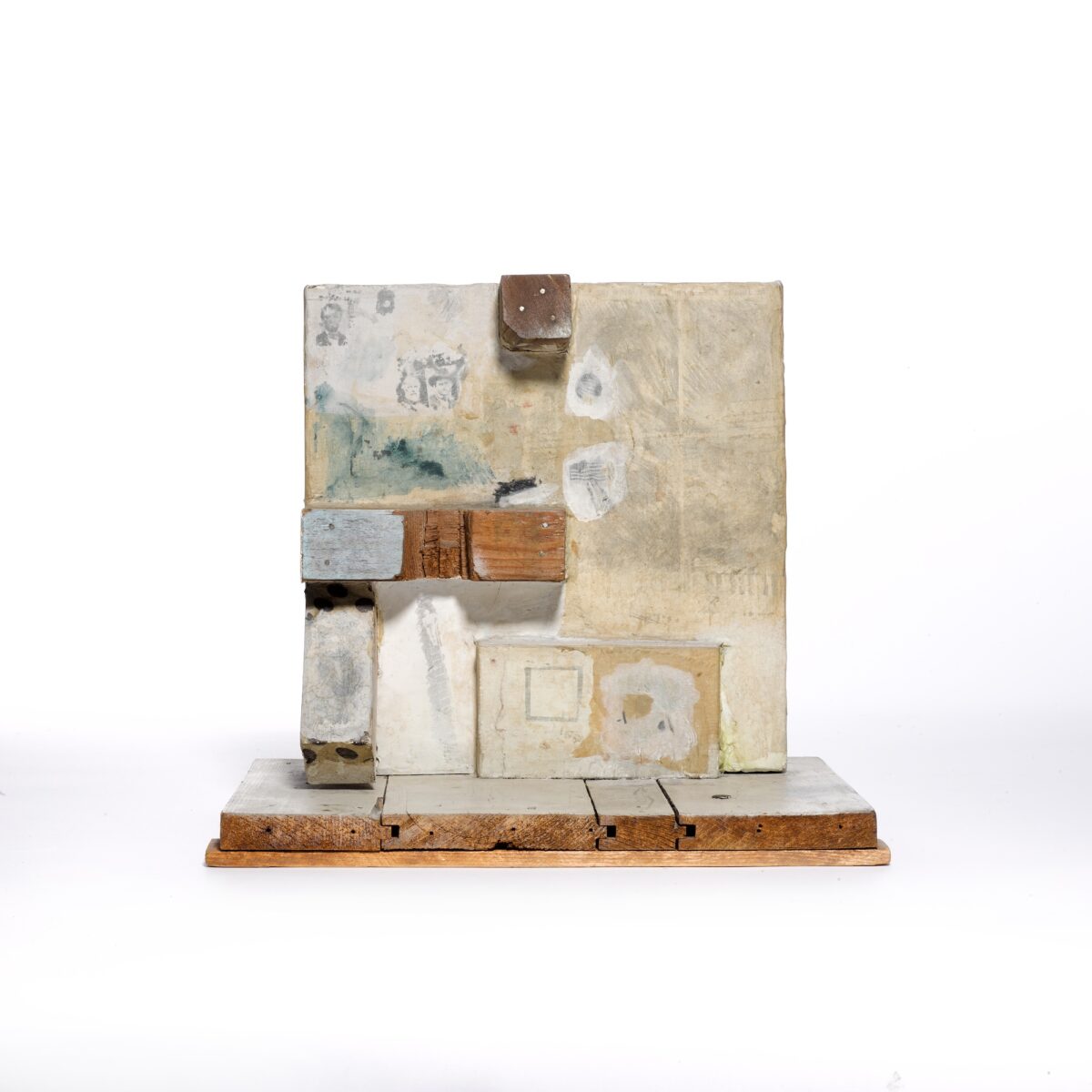
Robert Rauschenberg, Untitled, 1958
Untitled takes inspiration from the gritty industrial façades of the buildings in Lower Manhattan where Robert Rauschenberg lived in the late 1950s and early 1960s. Emblematic of the ordered chaos of New York, the collaged images on a wood format reflect the hectic and industrial nature of urban living. In the wake of the invention of collage by Georges Braque and Pablo Picasso, as well as those of the Dada artists, Rauschenberg reimagined these practices and gave them new impact with his Combines. This historically significant work represents an early experiment wherein Rauschenberg applied transfers to a freestanding Combine sculpture.
Rauschenberg pursued a diversity of media, from oil paint to photography, sculpture and collage, in his embrace of the impulse of the artists in his generation to challenge the traditional notions of painting. During this period, he began to build his works out into the viewer’s space so that they came to operate somewhere between painting and sculpture, in a new frontier of the visual arts described by Rauschenberg as “combine-paintings.” This Untitled sculpture embarked on a major travelling tour in the late 1990s, from Bilbao to Cologne.

Andy Warhol, Fragile, 1962
Dating to the pivotal year of 1962, Andy Warhol’s Fragile is from one of his first ever bodies of works, the Shipping Label series (which comprised only 16 works), and marks a decisive turn to his epoch-defining use of silkscreen. A signifier of something precious and valuable yet never revelatory of what it signifies, Fragile encapsulates Warhol’s playful and pioneering appropriation of iconic, everyday imagery – be it celebrity portraits and dollar bills, or in this case, a shipping label. Fragile was acquired by Goldenberg in 1989.
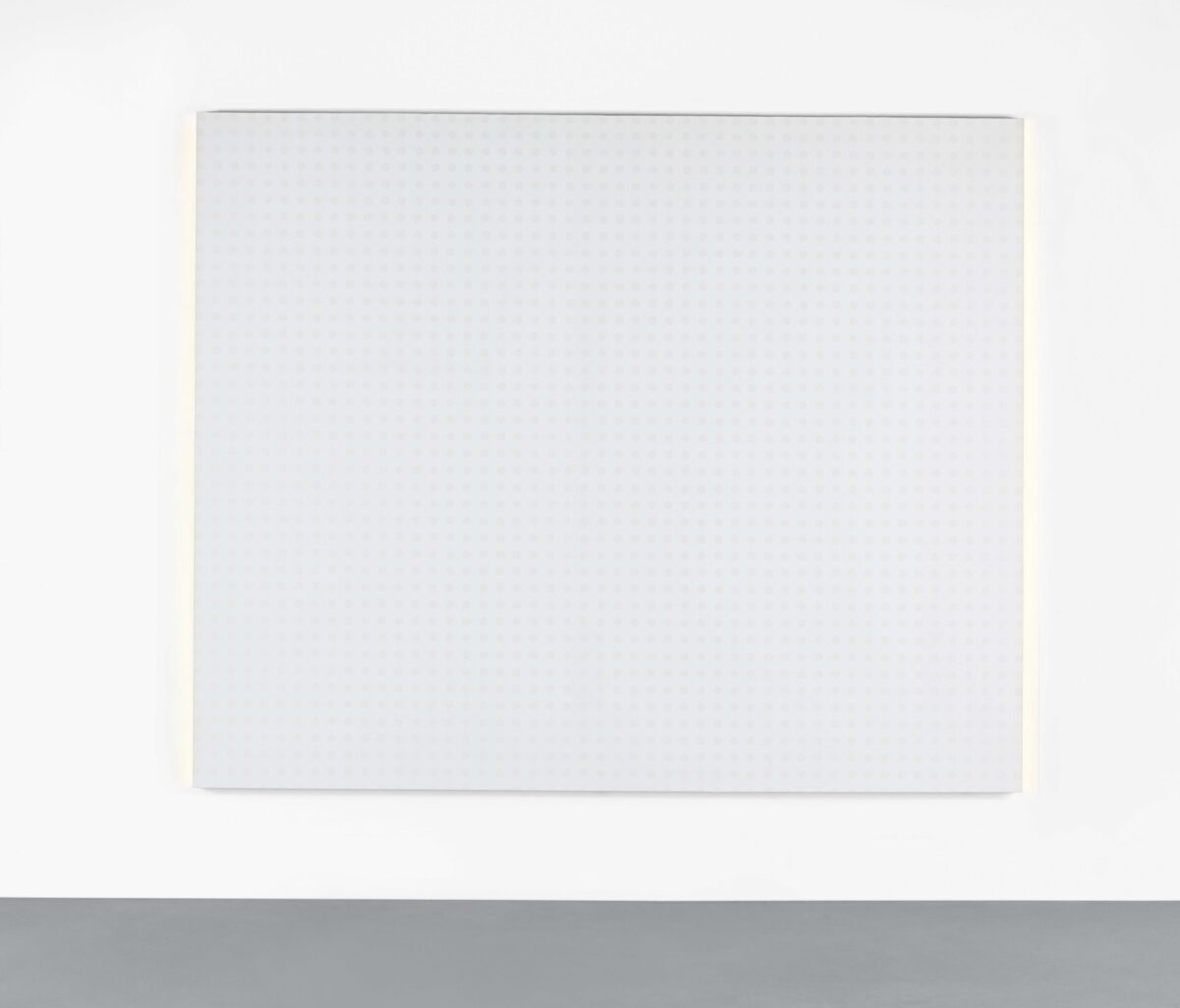
Damien Hirst, Forget, 2003
This serene work is unique within Hirst’s celebrated oeuvre, resplendent with minimalist white gloss spots that subtly emanate from the white matte ground and gold leaf enshrouded edges. Painted in 2003, together with a sister work titled Forgive, it was created for Hirst’s renowned Romance in the Age of Uncertainty exhibition at White Cube in London – offering a moment for self-reflection within the wider show, which explored the human experience covering love, life and death.
Hirst identified science as the defining belief-system of our contemporary age – rivalling that of religion. In many of the works created for this exhibition, Hirst infuses his art with the clinical sterility and assurance of pharmaceutical products, substituting religion’s role. Uniquely, and in contrast to the remainder of the series, Forget synthesizes science and religion in one otherworldly canvas – conveying spiritual and religious allusions through its title and scientific rigour through its minimalism. Together with Forgive, as the titles suggest, they offered a meditative space for the viewer to pause, ponder, confess, forgive and forget. Goldenberg acquired the work from the gallery the year it was exhibited, and it is now appearing on the market for the first time.
